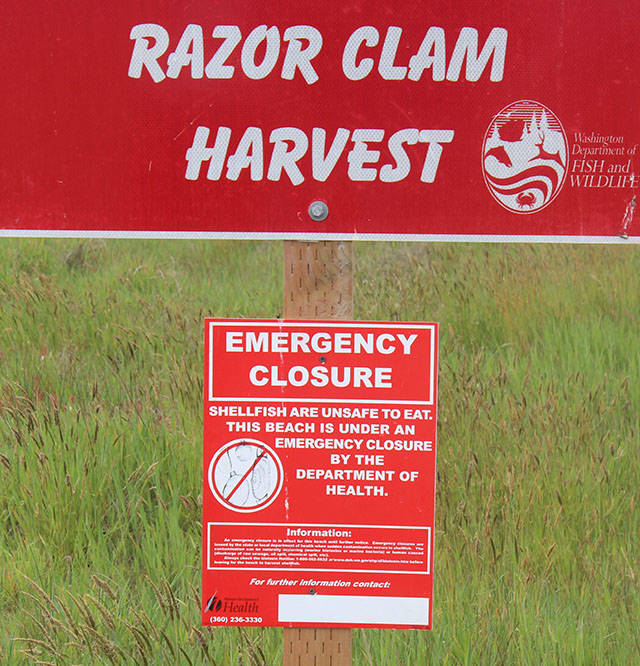State shellfish managers have closed Mocrocks beach to razor clam digging due to elevated marine toxin levels, bringing Washington’s razor clam season to an end, reports the Washington Department of Fish and Wildlife.
An initial toxin test last week indicated clams at Mocrocks were safe to eat, a second set of clams tested this week found that domoic acid levels now exceed the state public health threshold, said Dan Ayres, coastal shellfish manager for the Washington Department of Fish and Wildlife (WDFW). Two rounds of testing are required under state health rules before WDFW will open a beach to digging.
“We had hoped to have one last opening at Mocrocks this season,” Ayres said. “Unfortunately, toxin levels are on the rise and are unlikely to drop before the end of the month, when the clams begin to spawn and the beaches are closed to digging.”
Last week, the Washington Department of Fish and Wildlife (WDFW) closed both Long Beach and Twin Harbors beaches because of elevated levels of domoic acid.
A natural toxin produced by certain types of marine algae, domoic acid can be harmful or even fatal if consumed in sufficient quantities. The toxin has posed problems for razor clam and crab fisheries along Washington’s coast for the last two years.
Last week, state shellfish managers closed Copalis beach because the number of harvestable clams there has been met. However, the most recent tests show that domoic acid levels in razor clams collected from this beach now also exceed the state public health threshold.
Ayres said the next season will begin in the fall, when the older clams have recovered from spawning and a new generation begins to grow beneath the sand.
“We’ll conduct our annual assessment of clam populations over the summer and hope to open beaches again in September or October,” Ayres said.
More information about domoic acid, as well as information on Washington’s razor clam fishery, can be found on WDFW’s webpage.



